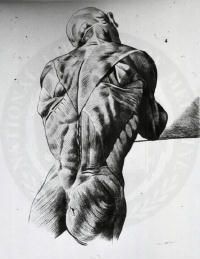Exercise and Aerobic Respiration
By two minutes of exercise, the body responds to supply working muscles with oxygen. When oxygen is present, glucose can be completely broken down into carbon dioxide and water in a process called aerobic respiration. The glucose can come from three different places:
- remaining glycogen supplies in the muscles
- breakdown of the liver's glycogen into glucose, which gets to working muscle through the bloodstream
- absorption of glucose from food in the intestine, which gets to working muscle through the bloodstream
Aerobic respiration can also use fatty acids from fat reserves in muscle and the body to produce ATP. In extreme cases (like starvation), proteins can also be broken down into amino acids and used to make ATP. Aerobic respiration would use carbohydrates first, then fats and finally proteins, if necessary. Aerobic respiration takes even more chemical reactions to produce ATP than either of the above systems. Aerobic respiration produces ATP at the slowest rate of the three systems, but it can continue to supply ATP for several hours or longer, so long as the fuel supply lasts.
Advertisement
